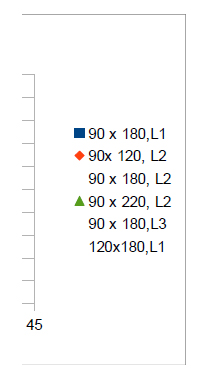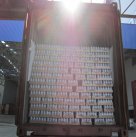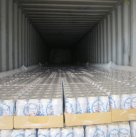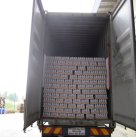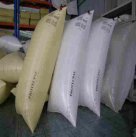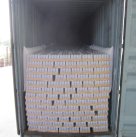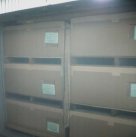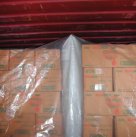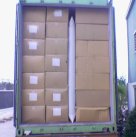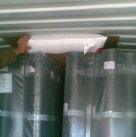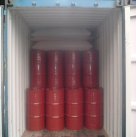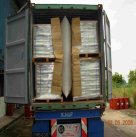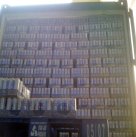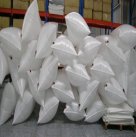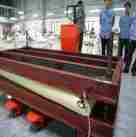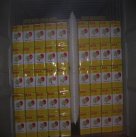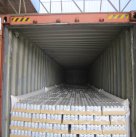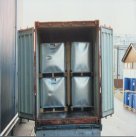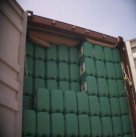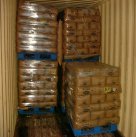Dunnage bags
The dunnage bags that we provide are made up of two layers; the inner one made with polythene bladder and the outer one made up of woven polypropylene. This two layering gives immense strength to our bags and enables them to hold anything for a longer time without any breakage. The nipple valve that is made with reusable polyethylene is sealed with heat onto the bladder that enables it to inflate and even deflate easily. There is an inflator chuck that is customized accordingly enables easy inflation when connected to a compressed air line. The plastic that we use in the manufacturing of our bags is easily recyclable and reusable. They have a standard width that is 90 cm and the length may change according to your preference like 120/180/220cm.
Apart from the medium duty dunnage bags that we have discussed above, we also deal in heavy duty dunnage bags that offer more strength than the medium ones. You can avail any of these bags for easy shipment and transportation and a very competitive market price from CEJIPAC.
Specification
MEDIUM DUTY DUNNAGE BAG SPECIFICATION
DESCRIPTION
This is a reusable two layer dunnage bag with an inner polyethylene bladder to hold the air and a woven polypropylene outer bag to give it strength . A reusable polyethylene nipple valve set is heat-sealed onto the bladder for easy inflation and deflation. All the plastic material used can be easily recycled when the bag is discarded. A custom made inflator chuck connected to any compressed air line is used for inflation.
| WORKING PRESSURE | |||
| - for 1-layer of PP woven (800denier nominal) | 20kPa( 2.9psi) | ||
| BURST PRESSURE ( in a void of 200mm) | |||
| - for 1-layer of PP woven ( 800 denier nominal) | 60kPa(8.8psi) | ||
| OUTER LAYER MATERIAL SPECIFICATION | |||
| Material | Medium duty woven PP | ||
| Denier(nominal) | 800 (70gr/sq.m) | ||
| Mesh | 14 x 14 | ||
| INNER LINER / BLADDER SPECIFICATION | |||
| Material | LLDPE ( Hi-Flex) | ||
| Thickness | 0.10mm | ||
| Valve Type | Spring , reusable | ||
| Sealing method | Ultrasonic heating | ||
| STANDARD BAG SIZE | |||
| Width | Length | Maximum Void Size Usable | |
| 90cm | 120/180/220cm | 35cm | |
| Tolerance : +- 5 % for dimensions | |||
| Note: The outer woven PP bag will shrink by 2-3% | when new but will stretch back to its | ||
| nominal width after inflation. | |||
PRODUCT CODE
L1-1039V, L1-596V
HEAVY DUTY DUNNAGE BAG SPECIFICATION
DESCRIPTION
This is a reusable two layer dunnage bag with an inner polyethylene bladder to hold the air and a woven polypropylene outer bag to give it strength . A reusable polyethylene nipple valve set is heat-sealed onto the bladder for easy inflation and deflation. All the plastic material used can be easily recycled when the bag is discarded. A custom made inflator chuck is used for inflation .
| WORKING PRESSURE | |||
| - for 1-layer of PP woven (1000 denier nominal) | 40kPa( 5.9psi) | ||
| - for 1-layer of PP woven (1600 denier nominal) | 60kPa(8.4psi) | ||
| BURST PRESSURE ( in a void of 200mm) | |||
| - for 1-layer of PP woven ( 1000 denier nominal) | 120kPa(17.6psi) | ||
| - for 1-layer of PP woven (1600 denier nominal) | 180kPa(25.2psi) | ||
| OUTER LAYER MATERIAL SPECIFICATION | |||
| Material | Heavy duty woven PP | ||
| Denier(nominal) | 1000/1600 denier | ||
| Mesh | 14 x 14 | ||
| INNER LINER / BLADDER SPECIFICATION | |||
| Material | LLDPE ( Hi-Flex) | ||
| Thickness | 0.125mm | ||
| Valve Type | Spring , reusable | ||
| Sealing method | Ultrasonic heating | ||
| STANDARD BAG SIZE | |||
| Width | Length | Maximum Void Size Usable | |
| 90cm | 120/180/220cm | 35cm | |
| Tolerance : +- 5 % for dimensions | |||
| Note: The outer woven PP bag will shrink by 2-3% | when new but will stretch back to its | ||
| nominal width after inflation. | |||
PRODUCT CODE
WPP-1039V-L2 ,WPP-596V-L2 for the 40kPa working pressure
WPP-1039V-L3 ,WPP-596V-L3 for the 60kPa working pressure
| WPP DUNNAGE AIR BAGS SIZES AND WORKING PRESSURE CHART | Sept 10, 2012 | |||||||||||
| Working Pressure | ||||||||||||
| Width | Standard | Standard | Special order Special order Maximum | |||||||||
| in cm | Length in cm | L1(20kPa) L2(40kPa) L3(60kPa) | L4(80kPa) | Void (cm) | ||||||||
| Special order | 60 | 60 | 90 | 120 | 180 | 220 | ~ | Yes | Yes | Yes | Yes | 25 |
| Standard | 90 | ~ | ~ | 120 | 180 | 220 | ~ | Yes | Yes | Yes | Yes | 35 |
| Special order | 120 | ~ | ~ | 120 | 180 | 220 | 240 | Yes | Yes | Yes | Yes | 50 |
Notes.
- 1. The 90cm width x 120cm, 180cm or 220cm are the standard products available in stock (finished goods or in-process ).
- 2. The “special order “ products requires an MOQ (depending on in process stock at point of inquiry) and 4 weeks lead time.
- 3. The maximum void is the recommended max. gap for using the dunnage bag and is determined by the width of the bag .
Application
Applications – Dunnage Air Bags
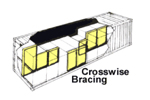
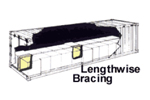
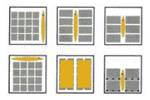
DESCRIPTION
Dunnage bags can be used to brace and cushion many types of cargo
loads .They can be used alone or in combination with woven strappings &
lashings to secure the cargo loads from shifting during transportation .
Just remember that the bag can be installed in many configurations:
a) Lengthwise
b) Crosswise
c) At the centre between 2 cargo loads
d) At the sides between the cargo loads and the container walls
e) At the top between the cargo loads and the container roof.
Applications – Products
-

Loose cartons
-

Loose rectangular tins
-
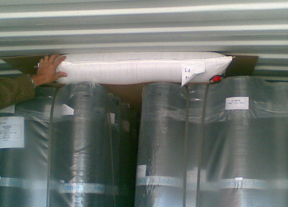
Products in rolls
-
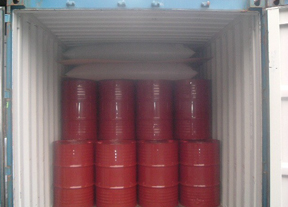
Drums
-
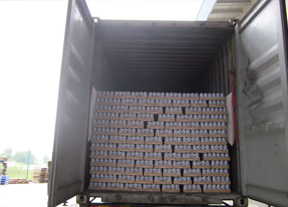
Canned Drinks in Cases
-
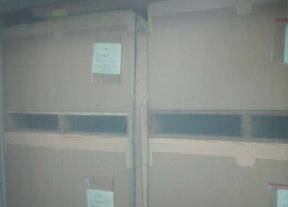
Cargo loads in crates
-
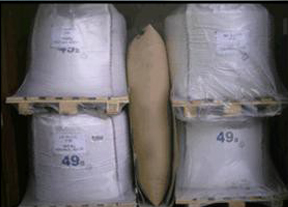
Big Bags /Bulk Bags
-
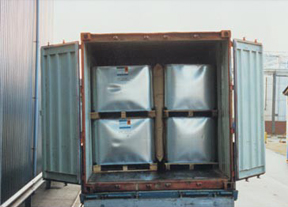
ISO tanks
Articles
Dunnage Bag In Cargo Load Securing
Cejipac Sdn. Bhd.
Why secure the cargo loads?
The sea can be rough!
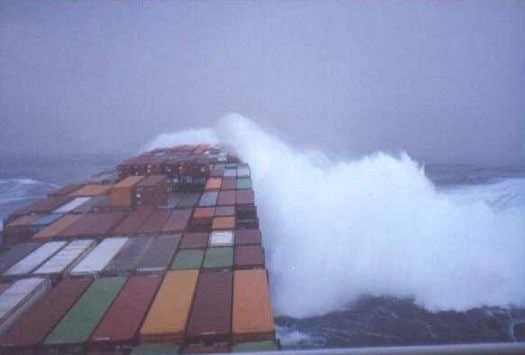
Why secure the cargo loads?
The goods can fall out !
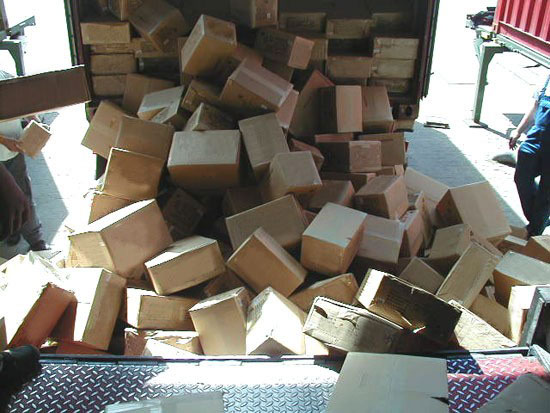
Why secure cargo loads?
Damaged goods and properties can be expensive!
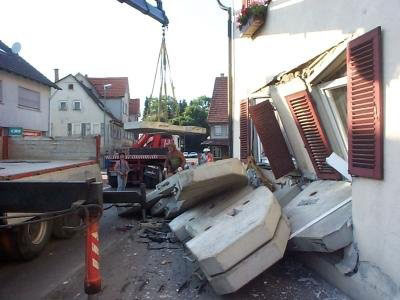
Why secure the cargo loads?
Can cause accident!
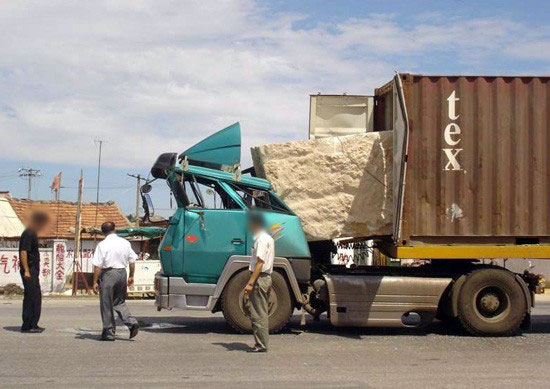
Why secure cargo loads?
Can damage the container!
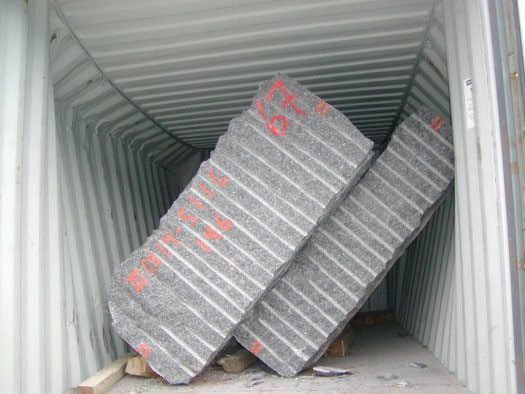
Why secure the cargo loads?
Can cause public nuisance!
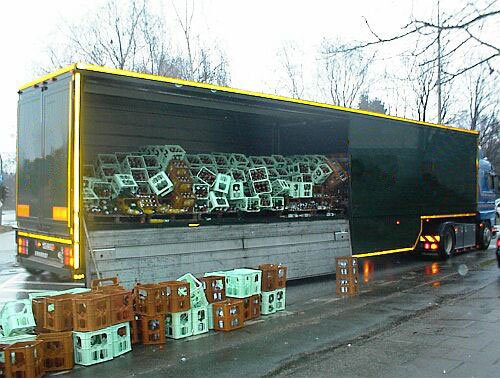
Common excuses given
“It’s so heavy, it won’t shift”
“We thought it will be strong enough”
“We have no time to secure the cargo during loading”
“We have been doing this for 20 years and nothing like this has ever happened before”
Introduction
What is a dunnage bag?
It is a bag filled with air and used to restrain loads in rail cars, trucks and containers.It is also used to fill voids between articles of cargo to prevent shifting during transit.
Construction
A polyethylene bladder with a polyethylene valve
To give strength , the bladder is wrapped in one or multiple ply of kraft paper, vinyl, nylon or woven polyethylene sheet.
Purpose
To fill voids , brace loads,restrain loads, absorb vibration and cushion the loads from in-transit damage.
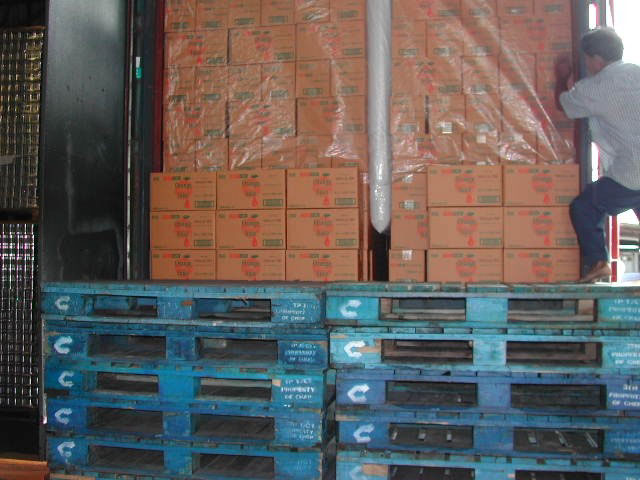
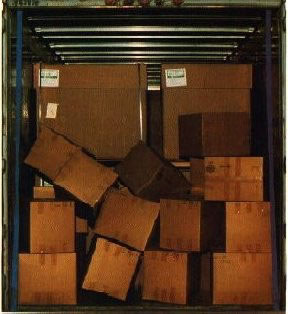
How does it work?
Adapt to any shape, space or void
Absorb vibration
Exert constant pressure
Cushion
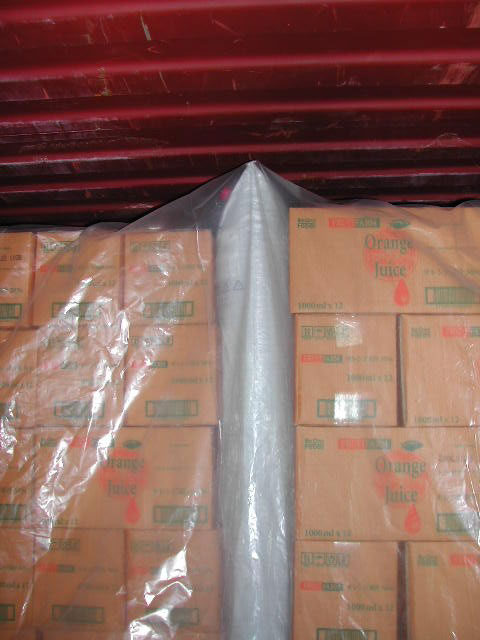
Working Pressure
| Level | Fabric Denier | Working Pressure .kPa | |
| 1. | 900 | 20 | |
| 2 | 1000 | 40 | |
| 3 | 1600 | 60 | |
Forces
Given Bag: 90 x 180 cm , 1000D
Contact Area , 80% : 72 x 144cm =1.04m2
Force = Pressure x Area
Force = Working Pressure x Contact Area
Force = 40kPa x 1.04m2
Force = 41.6 kN
Force = 41.6 /9.81m/s2 = 4.2 tonne
Typical Forces (Tonne)
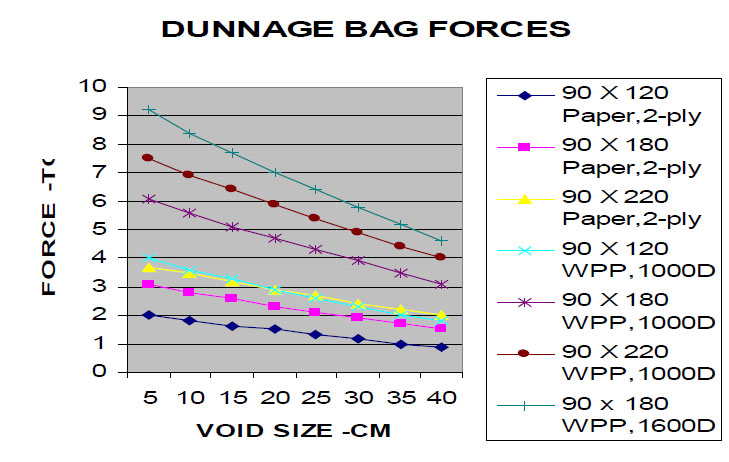
Loading Plan
Have out a loading plan
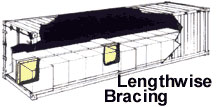
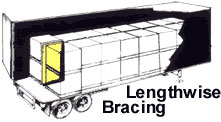
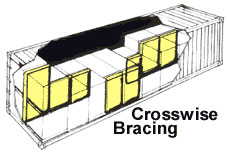
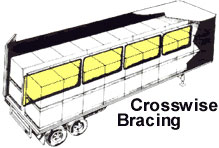
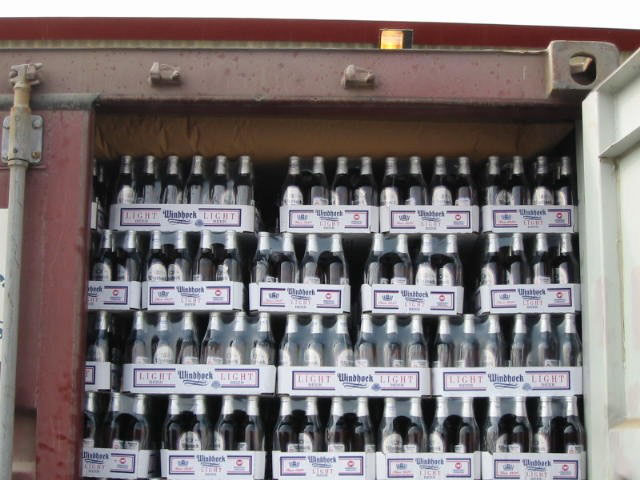
How To Install The Bag?
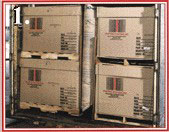
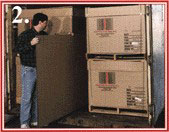
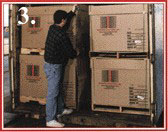
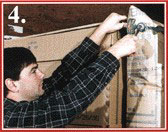
Step 1:Choose the right size for maximum contact
Step 2:Protect the bag from sharp objects
Step 3:Position the bag correctly
Step 4:Inflate the bag till the cargo is properly secured
Situation To Avoid #1
Using too big a bag
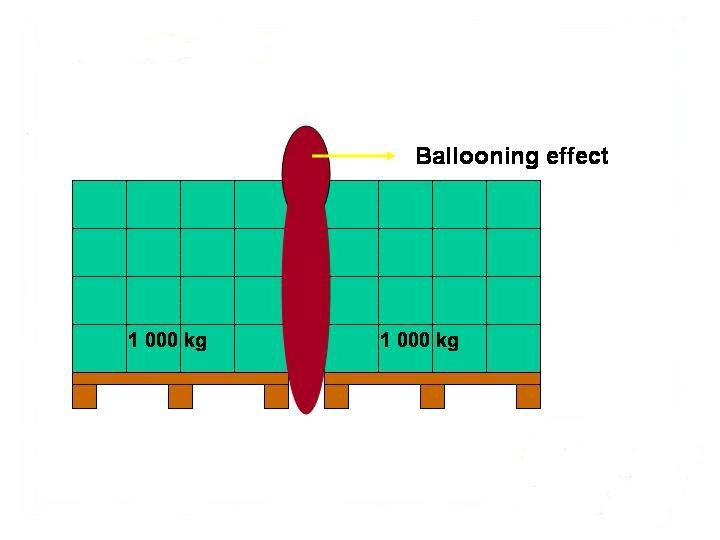
Situation To Avoid #2
Using too small a bag
Situation To Avoid #3
Too big a void
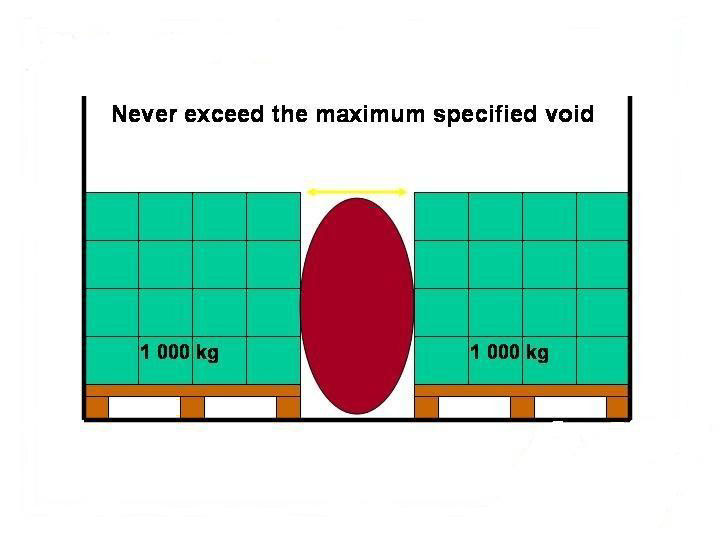
Situation To Avoid #4
Never use two bags together
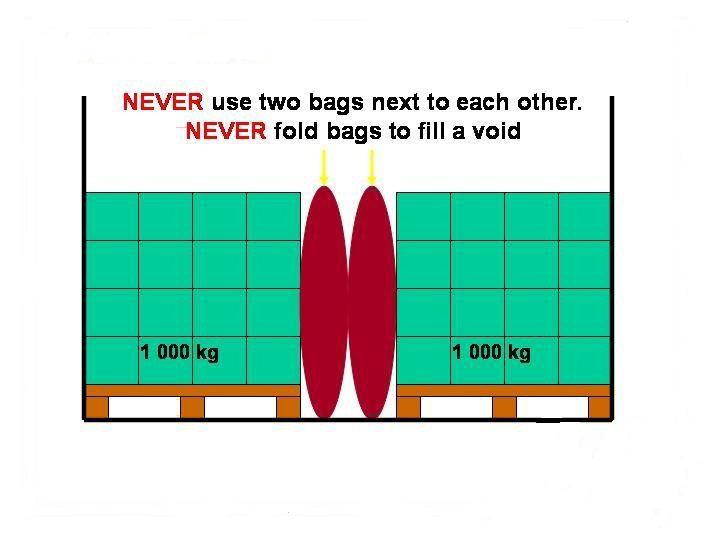
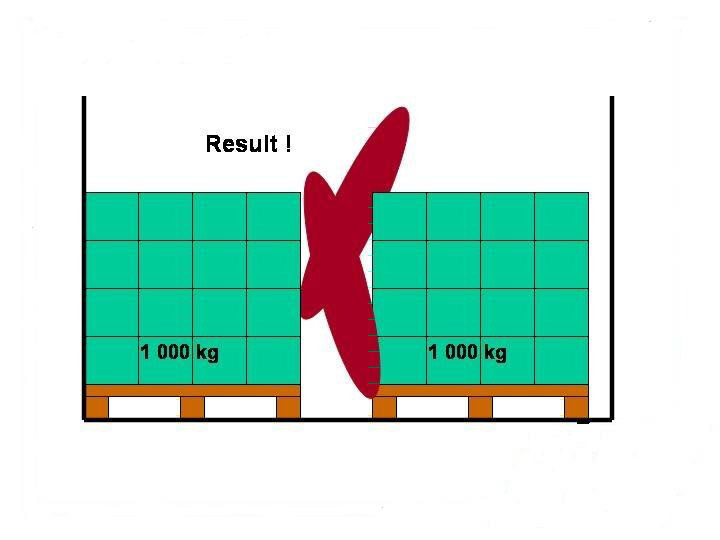
Situation To Avoid #5
Do not place a bag next to the door
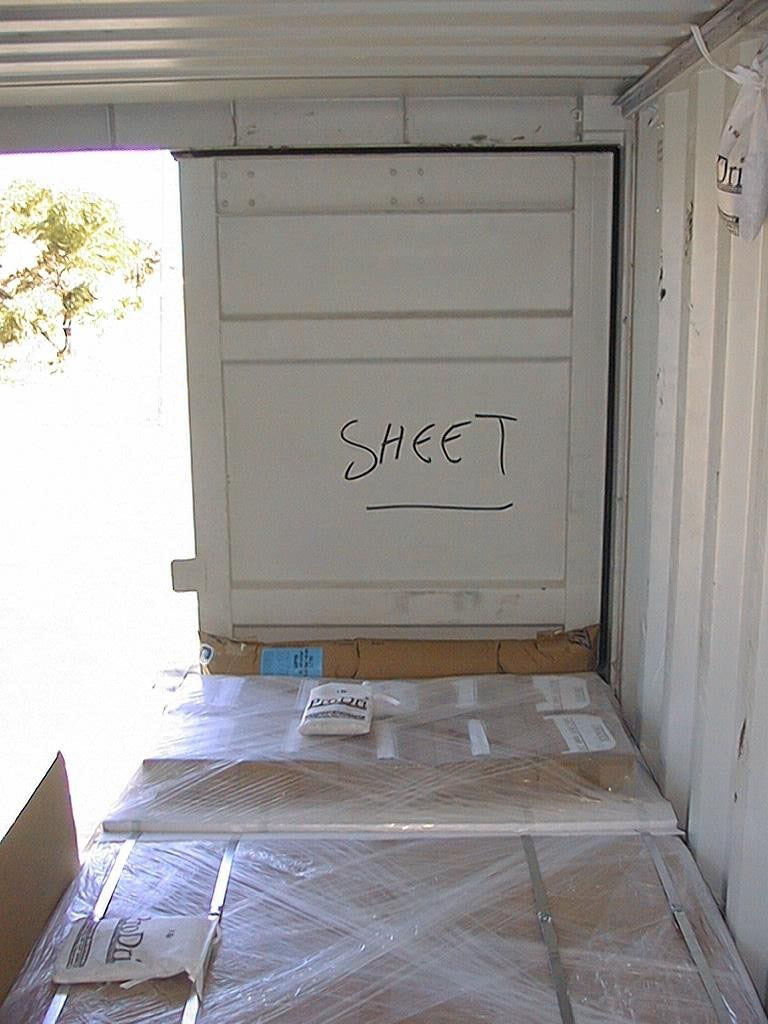
Situation To Avoid #6
Do not under-inflate
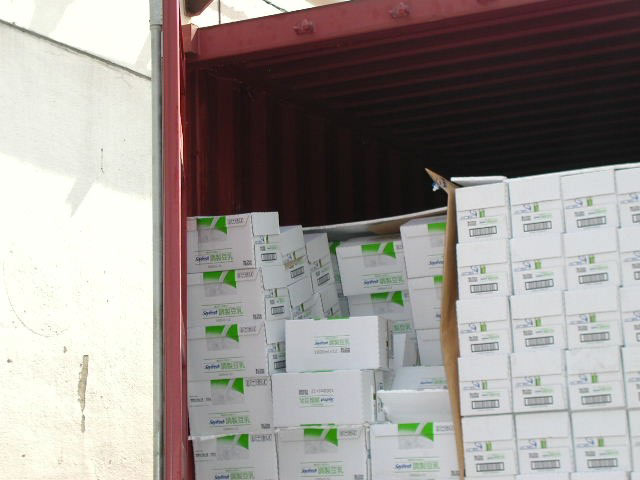
Situation To Avoid #7
Do not over-inflate the bag
Signs of over-inflation :
1. Cargo shape is distorted
2. Container walls are bulging
Situation To Avoid #8
Using an inflation tool with a sharp tip
- puncture the plastic bladder
Situation To Avoid #9
Ensure the bag is not exposed to any sharp edges eg. edges of pallet, tins & nails etc.
Sandwich the bag between 2 pieces of cardboard before inflation.
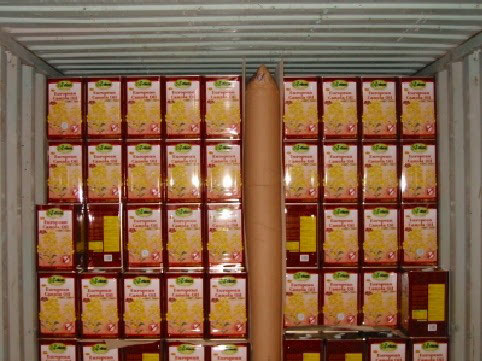
How to correctly inflate the bag?
Use a regulated air supply set at the recommended pressure
Give a few quick burst of air to open up the bladder before filling
Check that the load being secured cannot be moved and is not distorted
Observe that the container walls are just beginning to buckle
Stop inflation,tighten the valve cap and insert the plug
How many bags are needed?
According to the US FMCSA rules, the aggregate working load limit of any securement system used must be at least one-half the weight of the load.
Protect Your Cargo From Damage By Using Dunnage Bags
Introduction
Damage to cargo is mainly due to cargo loads knocking into each other or against the walls of the container.Whenever there is a void amongst the cargo loads and walls , the cargo loads will shift during transportation. At the time of loading, it may seem that the voids are very small . However, during transportation the compacting motion will tend to accentuate the voids . Consequently, the cargo loads will shift and collide with each other or against the walls. The impact is determined by the weight of the cargo load and the acceleration or deceleration of the container or truck. So the impact can be quite tremendous !.
The Dunnage Bag Solution
The simple solution to the problem is to fill up the voids amongst the cargo loads . Seems like the dunnage bag is perfect for this job.
What Is A Dunnage Bag?
Essentially it consist of a plastic air bladder fitted with a one-way or two-way valve and placed
inside a paper bag ( single or multiple ply ) or a polywoven bag .The outer bag serves to
protect the inner bladder and to give it strength when inflated.
Other names used for dunnage bags are air bags, disposable inflatable dunnage and
pneumatic dunnage.
Dunnage bags are normally specified by size ( the uninflated width and length) and working
( or operating) pressure as these attributes determine the force the bag can generate when
inflated.
Working Pressure
The common working pressures are 10kPa(1.4psi), 20kPa(2.9psi),40kPa(5.8psi) and 60kPa(8.7psi). For paper dunnage bags, this roughly correspond to 1-ply for the 10kPa, 2-ply for the 20kPa , 4-ply for 40kPa and 6-ply for the 60kPa bag.In the case of polywoven dunnage bags, there is only one layer for the outer bag and the density (gsm) of the woven fabric is the main determinant of the working pressure.For a given working pressure,the force generated is directly proportional to the size of the bag . The force needed to restraint the cargo loads inside the container is a largely dependent on the gross weight of the cargo.
Sizes
It is important to select the correct size to fit the gross height of the stacked cargo loads inside the container. The force transmitted is directly proportional to the contact surface area with the cargo load .It is good to have as as much of the cargo load surface as possible covered by the dunnage bag.
Void
It is important to select the correct size to fit the gross height of the stacked cargo loads inside the container. The force transmitted is directly proportional to the contact surface area with the cargo load .It is good to have as as much of the cargo load surface as possible covered by the dunnage bag.
| Width of bag | Recommended Max. Void | ||||
| 60cm(24″) | 25cm(10″) | ||||
| 90cm(36″) | 35cm(14′) | ||||
| 120cm(48″) | 50cm(20″) |
How To Install The Dunnage Bag?
It is recommended that the dunnage bag be placed and inflated between the cargo loads right
in the middle of the container or truck. In this configuration the inflated bag will push and hold
the cargo loads on both sides of it tightly against the walls.You are effectively using both sides
of the bag.
The dunnage bag can also be placed on top of the cargo loads if the void there is within the
maximum size recommended.In this set-up , only one side of the dunnage bag is pushing and
holding down the cargo loads.
Another workable configuration is to install the bag between the cargo load and the container
wall.
The bag can be placed vertically or horizontally , depending on the height of the stacked cargo
loads.Heavy cargo normally have lower stacked heights than lighter cargo . The bag should
not protrude out of the cargo load by more than 5-10cm especially at the top . This will
prevent any “ballooning” effect . At the same time ,the bag should also be 5-10cm away from
the floor.
The sharp edges of the pallets or cargo loads may puncture the inflated bag . It is therefore
recommended to sandwich the bag between two pieces of cardboard , chip board or equivalent
before installing it.
When the bag is being inflated you can hear the cargo loads shifting. Stop the inflation when
the container starts to creak and the cargo loads are pushed and held tightly against each
other and against the walls.
How Many Bags Are Needed ?
The rule-of-thumb is that the total restraining forces should be at least one-half the weight of the cargo. For example , a 20-footer container loaded with cargo of weight 20 tonnes (44000 lbs) should have total restraing forces of at least 10 tonnes(22000 lbs) . A typical force chart for a dunnage bag of working pressure 20kPa is as follows:
| Bag Size | 25cm(10″) Void | 35cm(14″) Void | |||
| 90x 120cm(36″x48″) | 1.3 tonnes(2860lbf) | 1 tonne(2200 lbf) | |||
| 90x180cm (36″x72″) | 2.1 tonnes(4620 lbf) | 1.7 tonnes( 3740 lbf) | |||
| 90x 220cm(36″x88″) | 2.7 tonne(5940 lbf) | 2.2 tonnes(4840 lbf) |
Note: This is the force generated from any one side of the inflated bag.
Common Problems With Dunnage Bags
The No.1 and most serious problem is leakage where the inflated bag becomes deflated over
time.It is important to make sure the valve cap is tightly screwed down and plugged after
inflation.Leakage is mainly due to defects in the plastic air bladder or heat-welded joints .This
can be verified by inflating the bag and leaving it aside for 6-12 hours.
Burst bag can result from using too small a bag or a bag of too low working pressure for the
weight of the cargo. It can also be due to “ballooning” where too much of the bag is free to
expand.
If the void size is too big for the bag of a given size, then, it is prudent to use a bag with a
larger width or use void fillers to reduce the void size first.
At no time should two dunnage bags be placed together in order to fill a big void .During
transportation, the compacting forces will result in one of the bags slipping out of position.
It is not a safe practice to place the dunnage bag between the cargo loads and the container
doors. First, you will have a problem to close the second container door. Second, the container
doors may swing open suddenly on being unlatched at the receiving dock thus knocking and
possibly injuring any person standing in the way.
Some Photographs
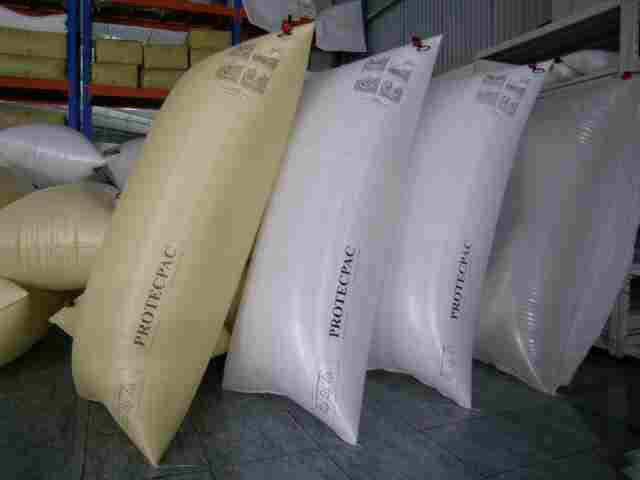
Inflated Dunnage Bags
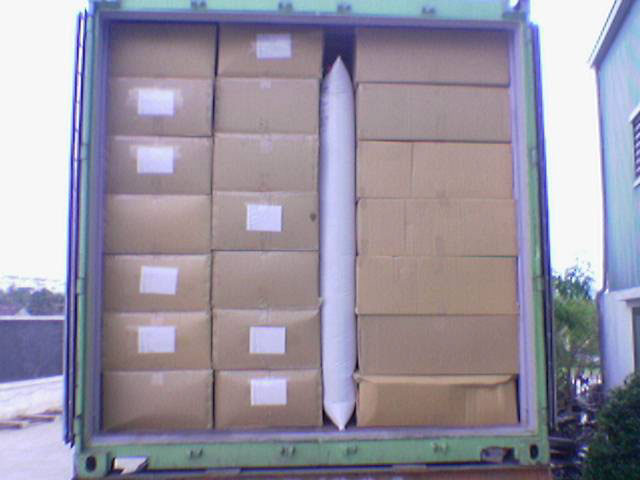
Using the dunnage bag to secure carton boxes
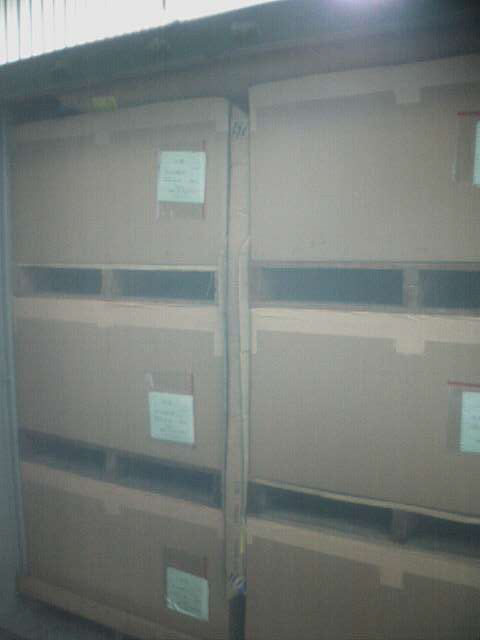
Using the dunnage bag to secure palletised
cargo loads
Loading And Securing Plans Using Dunnage Bags
1)Loading and securing plans
It is recommended that a loading plan be drawn up before loading the container and installing
the dunnage bags.This will ensure that the cargo loads are correctly placed and the dunnage
bags installed in the right locations.Any potential problem would have been highlighted and
resolved at the planning stage resulting in smooth container loading operation.The same
loading plan can be re-used for similar cargo loads in the future.
It is also recommended that a few photographs be taken of the container stuffing at the halfway
stage and final stage.One of the photograph should be with one of the container door
closed displaying the container no. These should be filed with the loading plan together with
relevant information such as date, time, cargo type ,lot no. and loading staff involved. These
pictures and information are available for review in case of any problem at the destination and
also for study and future improvement .
2) Typical Loading Plans
2.1)Loose Carton Boxes And Tins
Example 1 – Loose Carton Boxe
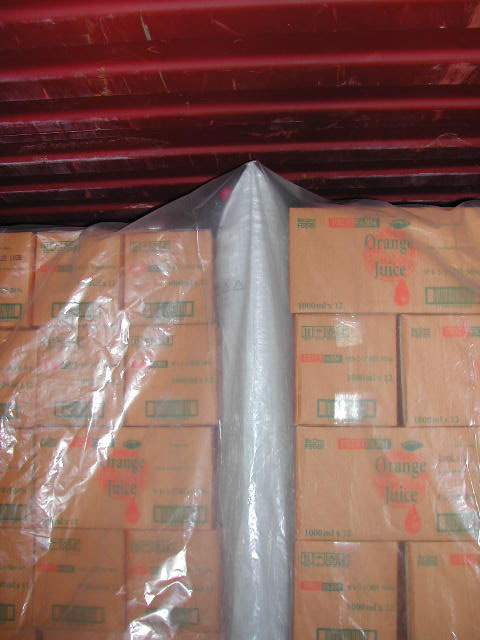
Dunnage Bag Holding The Carton Boxes Inside The Container
Example 2 – Securing Loose Tins Inside the Container Using Dunnage Bags
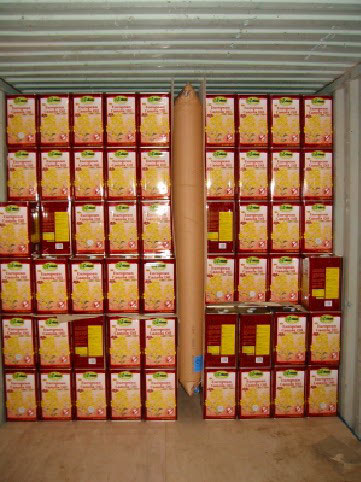
Securing Loose Tins Inside The Container Using Dunnage Bags
2.2 Pal etised cargo Load
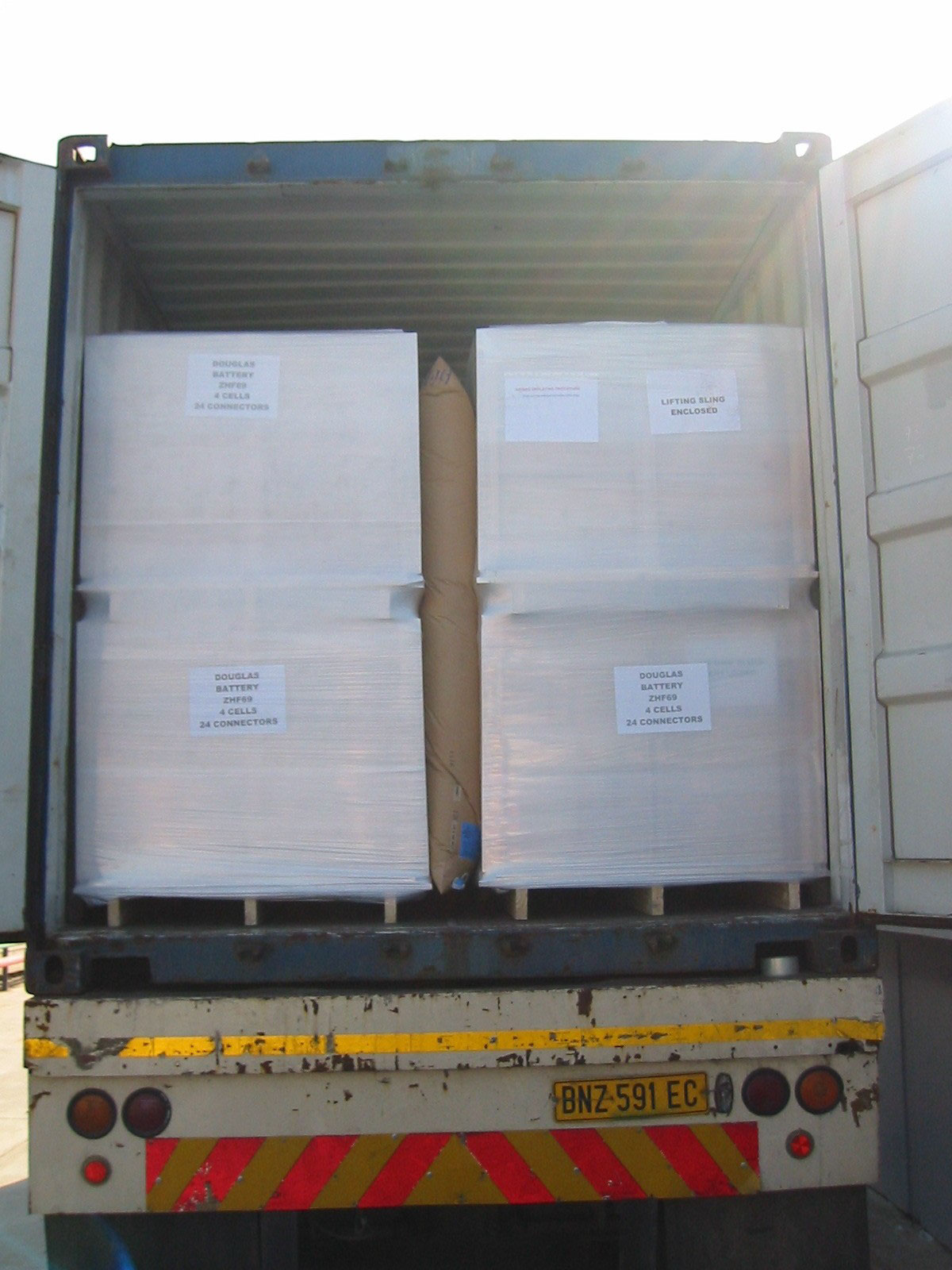
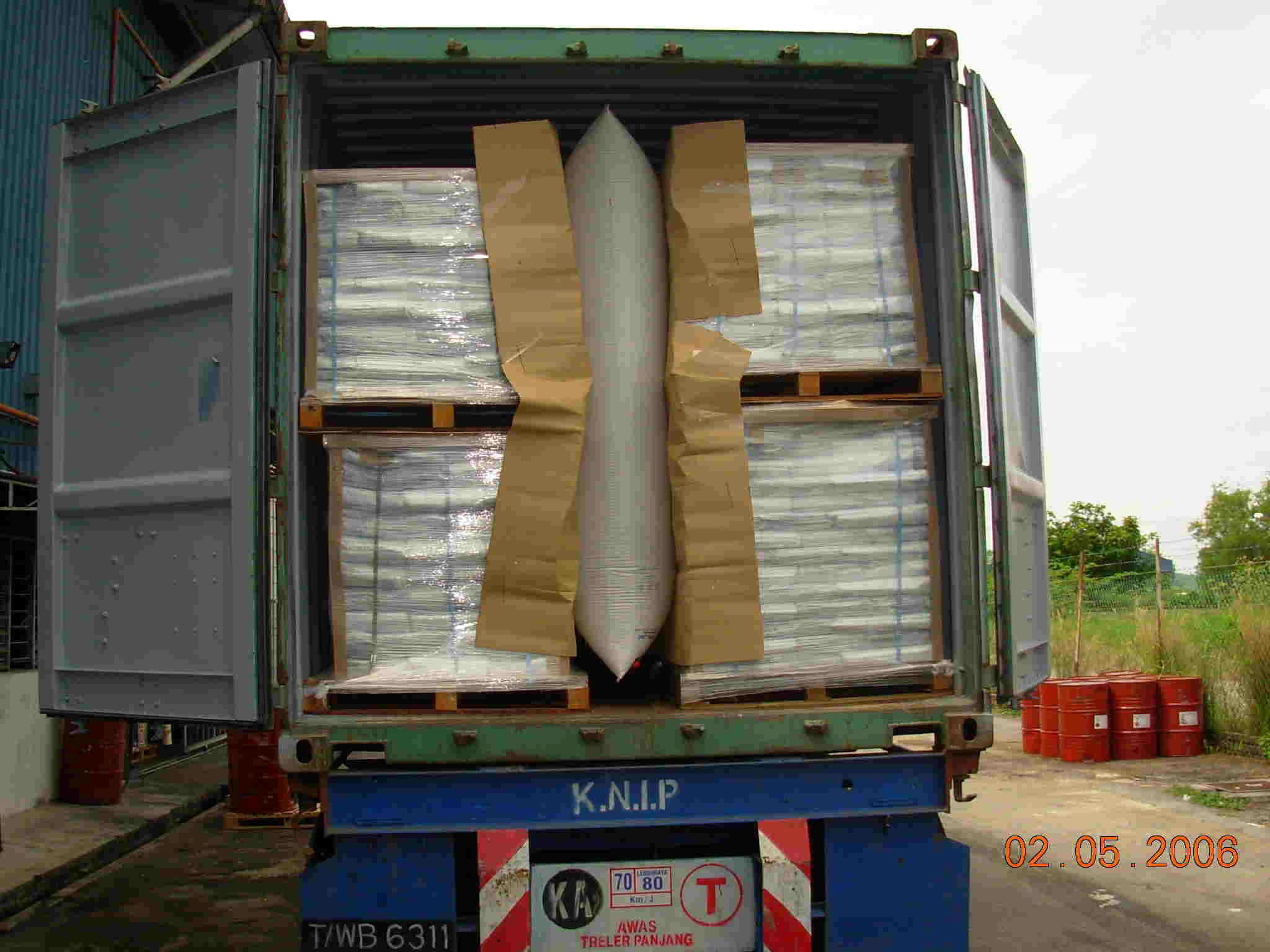
2.3) Cargo Loads In Crates
This is similar to palletised cargo except that the cargo load is very heavy or fragile and so need extra protection from the crates.
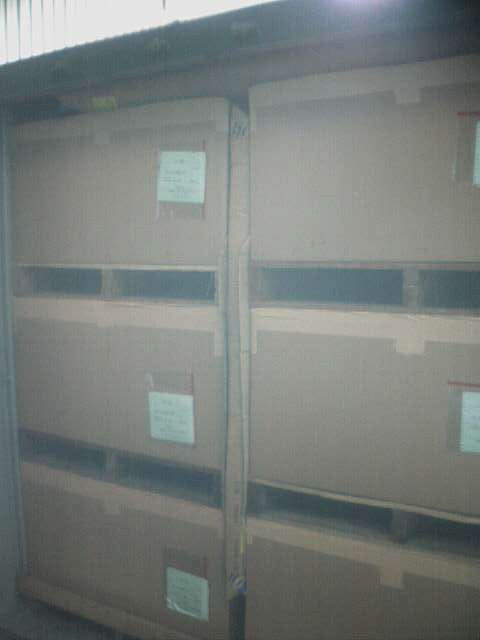
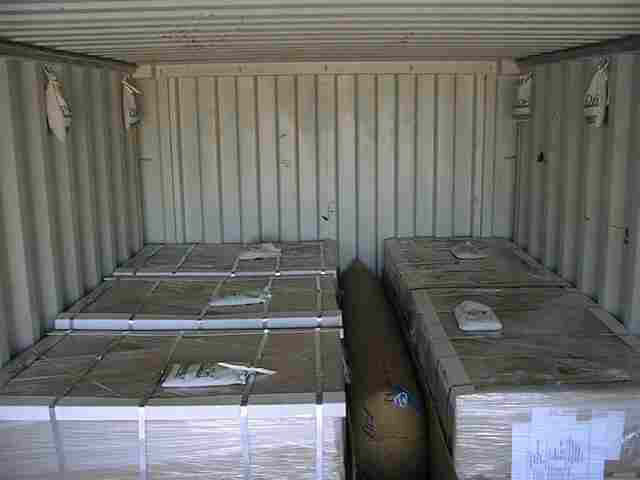
2.4) Big Bags And IBCs
Normally these are palletised before loading into the container.
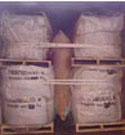
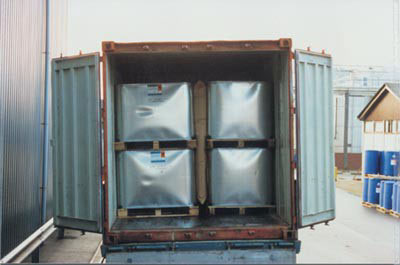
2.5) 25-kg Bags
If these are palletised , then this category of cargo load can be treated like palletised cargo. Sometimes , these bags are manually stuffed into the 20-footer container. In this case, the stacking method is also important .It pays to make full use of the alternating stacking pattern together with dunnage bags to ensure the cargo loads are safely secured inside the container.
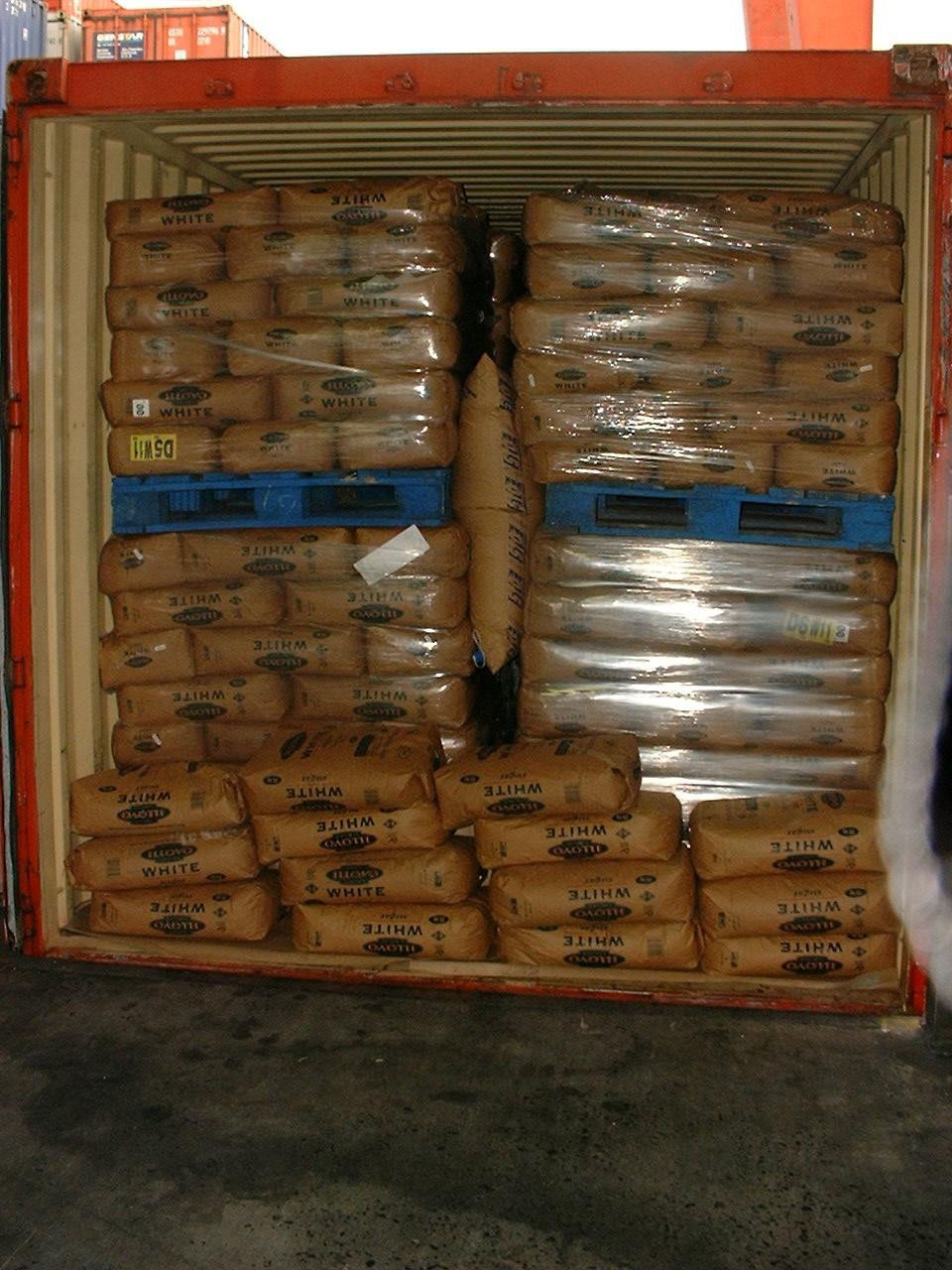
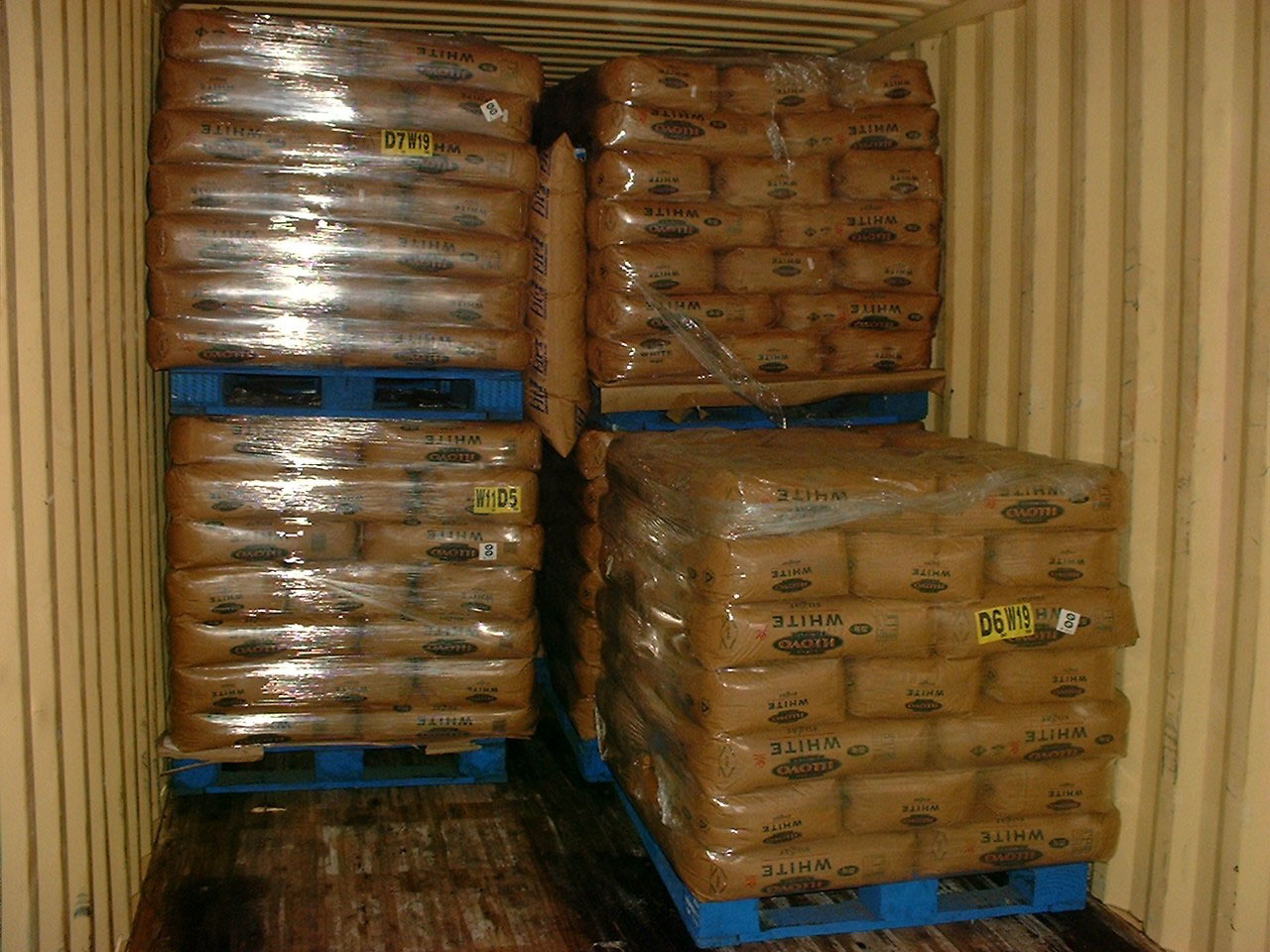
2.6) Cargo in roll form
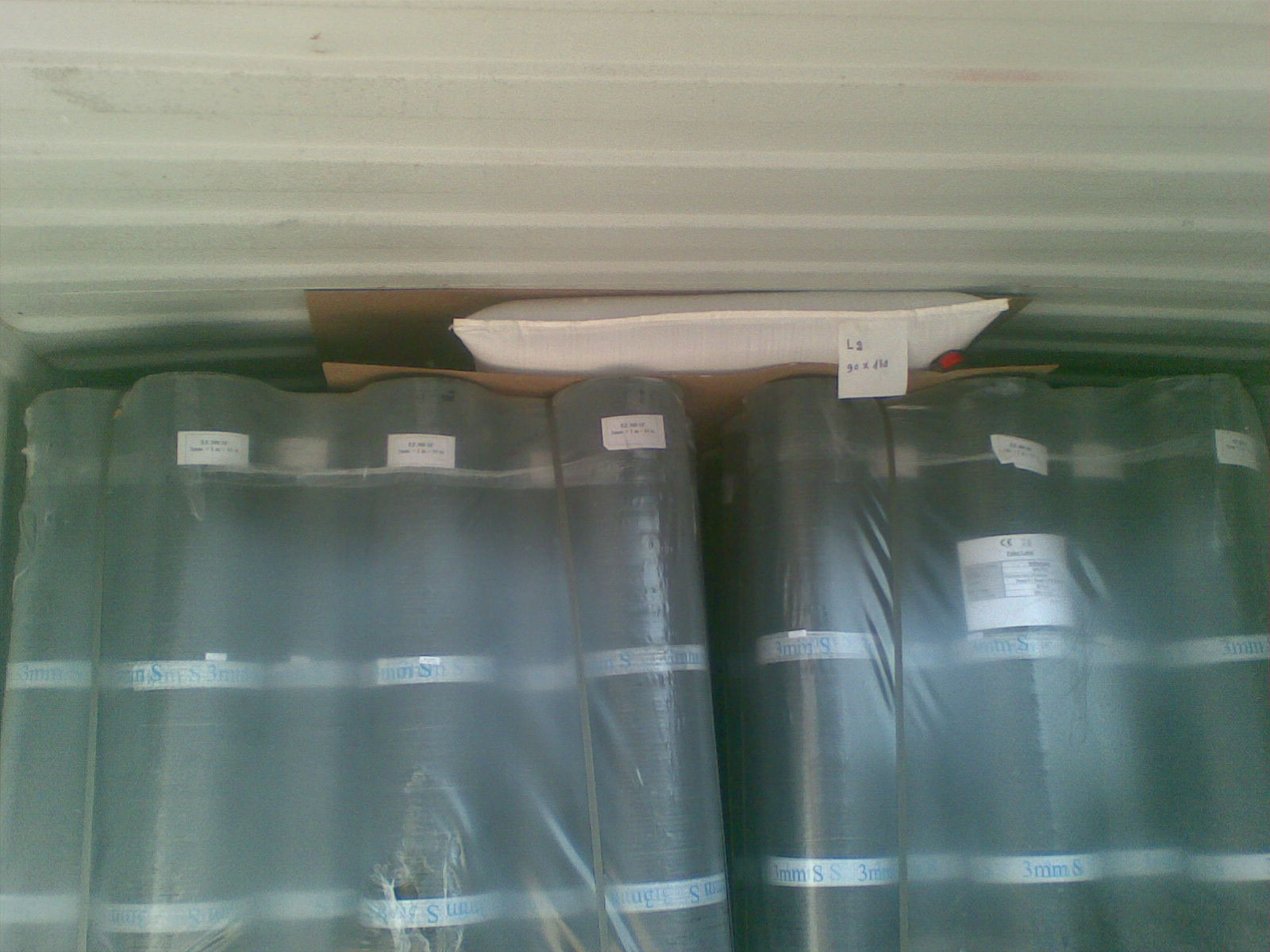
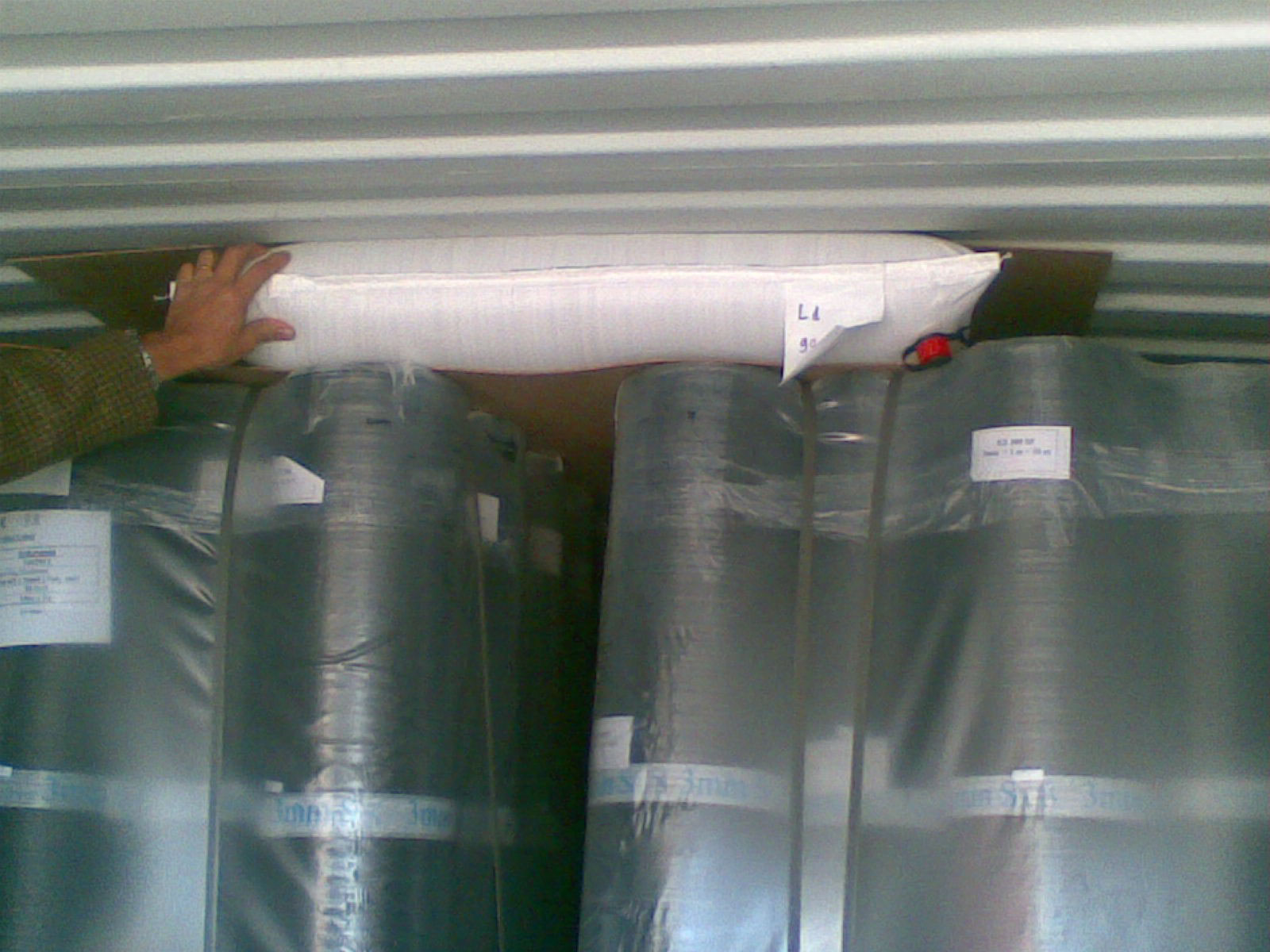
2.7) Jerrycans
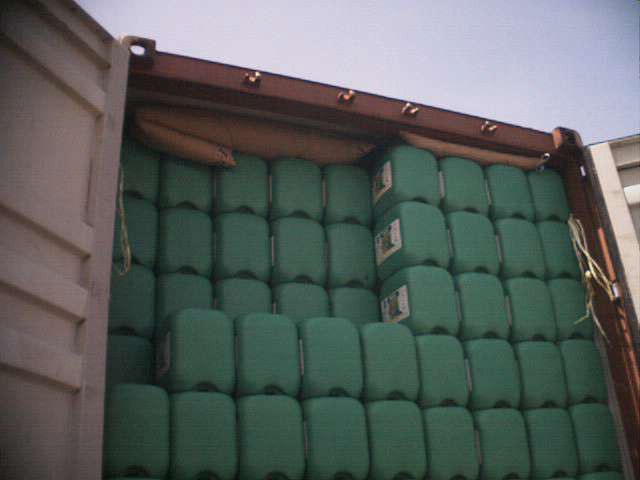
3.0) Conclusion
There is no one best method to secure the cargo loads inside the container.It depends on the weight, shape, quantity and how the cargo loads are bundled together. Just remember that the dunnage bags can be installed: a)between cargo loads b)at the sides between the cargo loads and the sides of the container and c)at the top between the cargo loads and the roof of the container. The only forbidden place to install the dunnage bag is between the cargo loads and the doors . Installing a dunnage bag here is difficult and dangerous to the person opening the door at the destination.
Comparison of Paper Dunnage Bag With Polywoven Dunnage Bag
1. Background
The paper dunnage bag was developed in the early 1960s to replace wood in cushioning cargo loads inside ship holds and containers. It consists of a plastic bladder which contains the air and covered by an outer shell(or outer bag) of kraft paper which provided the required strength. This outer shell or bag was later replaced by polywoven fabric in the 1990s . The polywoven dunnage bag has since outgrown the paper dunnage bag and is now estimated to have more than 80% of the market share as it is lighter, stronger, water resistant and recyclable.
2. Comparison
The comparison is basically a comparison of the polywoven fabric with the kraft paper as the other components are the same.
| Polywoven Fabric | Kraft Paper | |
| 1. | Light | About 50% heavier .For the same working |
| pressure ,need 2 layers of paper of the same | ||
| gsm as the polywoven fabric. | ||
| 2. | Strong | Weaker. More plys of paper needed to |
| match the strength of polywoven fabric. | ||
| 3. | Water resistant | Easily damaged by water |
| 4. | Recyclable | Must be made from virgin kraft paper to |
| provide the needed strength. | ||
| 5. | Cheap | More expensive for the same performance |
WPP Dunnage Bag forces
| WPP Dunnage Bag Forces | |||||||
| Working pressure | |||||||
| WPP, 800D,L1 | 20kPa | ||||||
| WPP, 1000D,L2 | 40kPa | ||||||
| WPP,1600D,L3 | 60kPa | ||||||
| Surface area of contact(m2) | |||||||
| Void size | 5 | 10 | 15 | 20 | 25 | 30 | 35 |
| Bag Size | |||||||
| 90 x120 | 0.98 | 0.89 | 0.80 | 0.72 | 0.64 | 0.57 | 0.49 |
| 90 x 180 | 1.49 | 1.38 | 1.26 | 1.15 | 1.04 | 0.94 | 0.85 |
| 90 x 220 | 1.84 | 1.7 | 1.57 | 1.44 | 1.31 | 1.20 | 1.08 |
| 120x180 | 1.99 | 1.84 | 1.68 | 1.53 | 1.39 | 1.25 | 1.13 |
| Dunnage Bag Forces(tonnes) | |||||||
| Bag type | Void size | ||||||
| 5 | 10 | 15 | 20 | 25 | 30 | 35 | |
| 90 x 180,L1 | 3.02 | 2.79 | 2.55 | 2.33 | 2.11 | 1.90 | 1.72 |
| 90x 120, L2 | 3.97 | 3.60 | 3.24 | 2.91 | 2.59 | 2.31 | 1.98 |
| 90 x 180, L2 | 6.03 | 5.59 | 5.10 | 4.66 | 4.21 | 3.81 | 3.44 |
| 90 x 220, L2 | 7.45 | 6.88 | 6.36 | 5.83 | 5.30 | 4.86 | 4.37 |
| 90 x 180,L3 | 9.11 | 8.44 | 7.71 | 7.03 | 6.36 | 5.75 | 5.2 |
| 120x180,L1 | 4.02 | 3.72 | 3.4 | 3.1 | 2.81 | 2.53 | 2.29 |
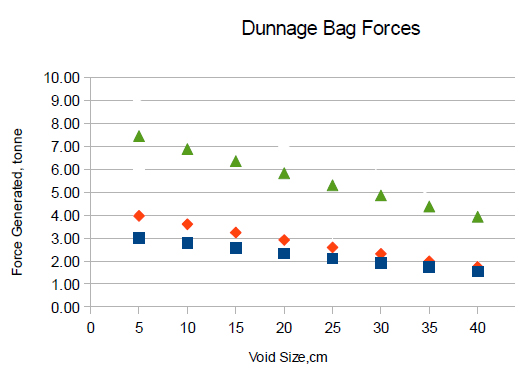
40
0.43
0.76
0.97
1.01
40
1.54
1.74
3.08
3.93
4.65
2.04
